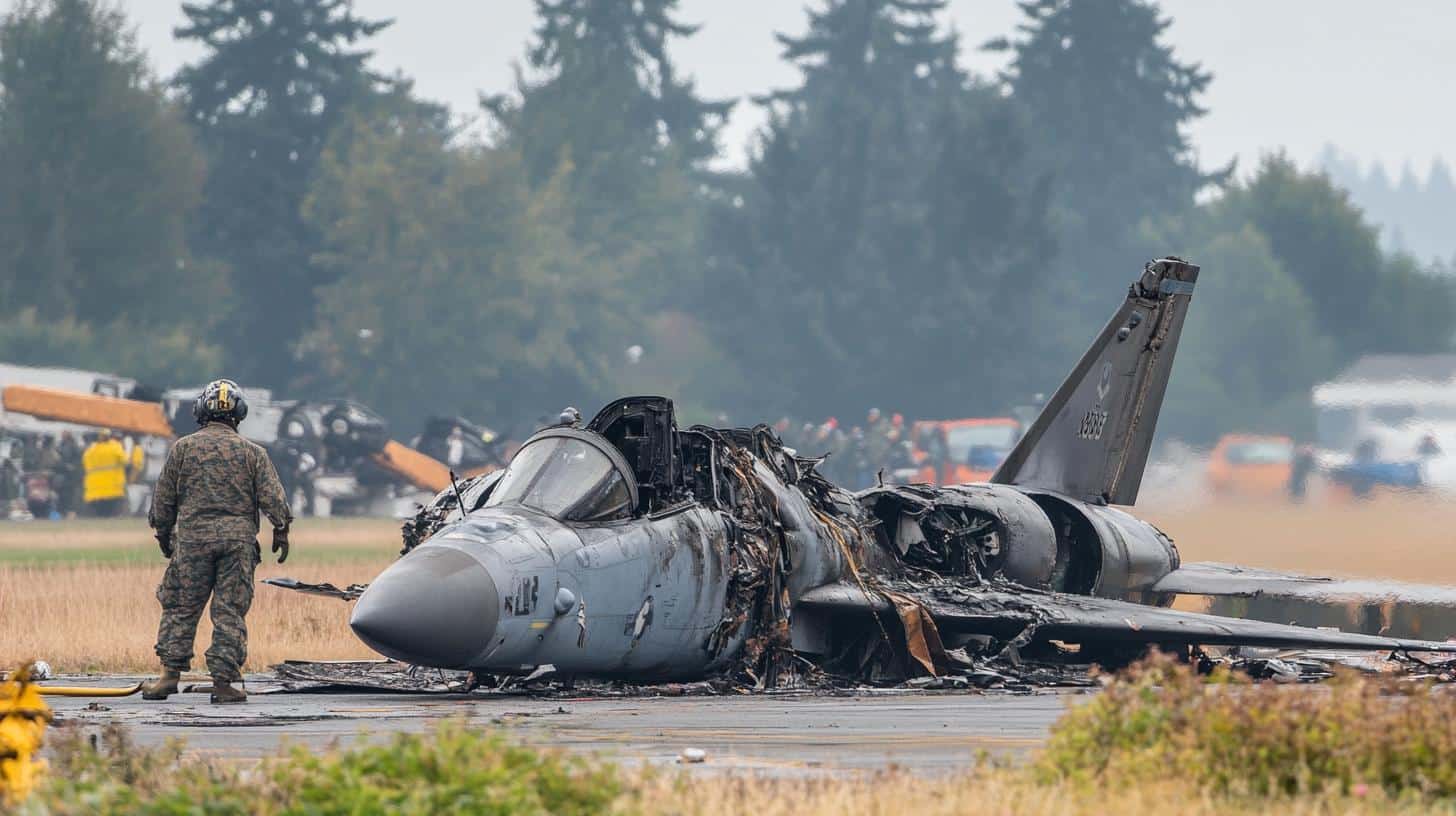The U.S. Navy has identified the wreckage of a fighter jet that crashed during a routine training exercise in Washington. The search for the missing crew members continues.
The incident involved an EA-18G Growler jet from the Electronic Attack Squadron, which went down Tuesday afternoon in the mountainous region east of Mount Rainier, according to reports from Whidbey Island Naval Air Station. The aircraft was on a scheduled training flight when it disappeared from radar at around 3:23 PM.
An intense search operation commenced immediately, involving a Navy MH-60S helicopter from NAS Whidbey Island. Despite challenging weather conditions, including rain and clouds in the area near Mount Rainier—a site known for its icy year-round snowfields—the team successfully located the crash site by 12:30 PM on Wednesday.
Efforts to reach the crash site on the rugged mountainside, where vehicles cannot travel, are ongoing. Rescue and recovery teams must contend with expected snowfall in the Cascade Mountains over the weekend, which could complicate the search and retrieval operations.
The EA-18G Growler, akin to the F/A-18F Super Hornet, is outfitted with advanced electronic warfare capabilities, highlighting its critical role in military operations. Each aircraft represents a significant investment, with an approximate cost of $67 million.
As of now, the status of the two crew members remains unknown, prompting continued efforts to ascertain what occurred during the flight. Navy officials have yet to confirm if the crew members ejected before the accident.
The Impact of Fighter Jet Crashes on Communities and the Military
Fighter jet crashes, such as the recent incident involving an EA-18G Growler near Mount Rainier, have profound effects on military personnel, nearby communities, and broader national interests. While these tragedies are not common, their impact resonates deeply, raising questions about safety, responsibility, and the delicate balance of military training in populated areas.
Effects on Military Personnel and Families
For the armed forces, each aircraft loss signifies not only a financial blow amounting to tens of millions of dollars but also a critical loss of experienced crew members. Families of the missing or deceased personnel face a harrowing wait as search and rescue operations unfold, a stark reminder of the risks faced by military members in training scenarios often seen as routine. The mental health of serving personnel can also be affected, as the reminder of such dangers underscores the hazardous nature of their profession.
Community Repercussions
Local communities near military bases and training areas are acutely affected by such crashes. The presence of military installations can be a source of economic stability due to jobs and infrastructure, but the accompanying risk of crashes causes anxiety. Mount Rainier’s neighboring areas, for instance, were thrust into the spotlight as search and rescue operations commenced. Such incidents can lead to discussions on safety protocols, flight path planning, and the potential need for increased communication between military organizations and local residents.
Environmental Concerns
Crashes in environmentally sensitive areas, like the national parks around Mount Rainier, raise concerns about long-term ecological damage. Aircraft wreckage can pollute land and water, potentially harming wildlife and natural resources. These incidents call for a swift response not just in terms of human rescue efforts, but also in environmental assessments and rehabilitation.
Technological and Safety Advancements
In the wake of accidents, there is often a renewed focus on advancing technology and procedures to prevent future occurrences. Modern military aircraft are equipped with cutting-edge safety features, yet incidents continue to provoke debates on system reliability and the human factors in operation. Continuous updates in training, simulation technology, and accident-response strategies are critical in enhancing aviation safety.
Controversies Surrounding Military Operations
The debate about the placement and necessity of military training exercises in proximity to civilian areas remains contentious. Some argue that such operations are vital for national security and realistic training, while others push for their restriction or relocation due to the inherent risks. These discussions are essential in balancing national defense needs against civilian safety and environmental conservation.
In conclusion, while fighter jet crashes are tragic and multifaceted in their impact, they also serve as catalysts for improvements in military operations, technology, and community engagement. The lessons learned from such incidents contribute to the ongoing dialogue about how best to conduct essential training exercises safely and responsibly.
For more insights on military operations and their implications, you can visit U.S. Navy and U.S. Department of Defense.







